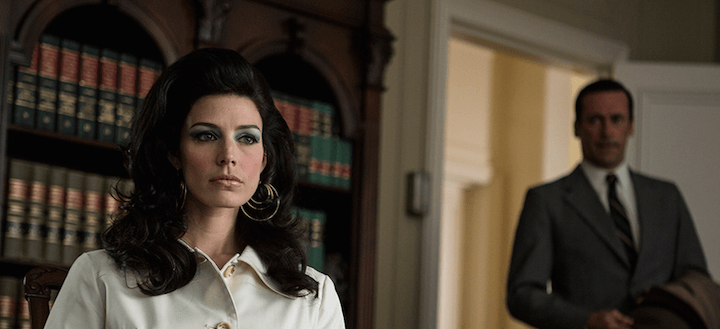

'70s
How Does Style Reveal the Fate of ‘Mad Men’s’ Megan and Stan?
Both of the show's clotheshorses dress for the part. But only one knows what that part truly is.
This article was made possible because of the generous support of DAME members. We urgently need your help to keep publishing. Will you contribute just $5 a month to support our journalism?
What good is being free to be you and me when you don’t know who you are to begin with? The Mad Men season premiere contrasted executives Joan and Ken to show the ways sexism curtails women’s freedom of action. This past week’s episode contrasts artists Megan and Stan to show the limits of liberation.
Remember when Stan Rizzo was clean-shaven and wore polo shirts as tight as Ace bandages? When Megan Calvet wore dirndl skirts and clear, bright solids? Mad Men is methodically tying off its narrative threads, and in the second installment of these final seven, we hemmed up the stories of those two extraordinary clotheshorses, Stan Rizzo and Megan Calvet Draper: Preppy jock turned glorious mountain man; Jackie O turned Brigitte Bardot.
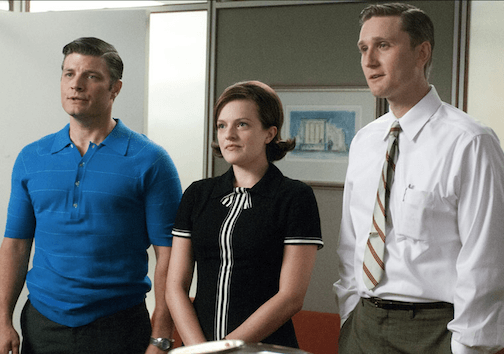
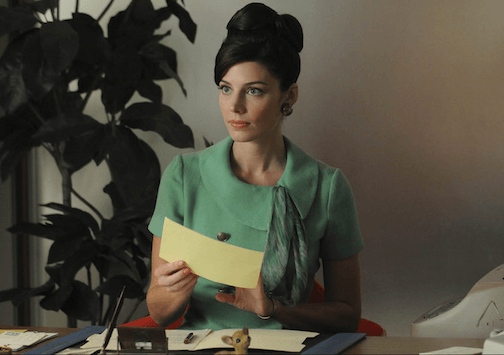
Like Joan and Ken, Stan and Megan had no particular relationship to each other, but their personalities and story arcs called to each other frequently, in more ways than their peacock attire. They were the most creative of the creatives at Sterling Cooper, the only ones who did independent art projects outside of the agency. Their personalities were similar as well: Playful and sharp-tongued, Stan and Megan are less politic and more emotionally expressive than the rest of the SC&P crew. In season 6, their stories converged in a way the characters themselves never discovered. The original plan to open an SC&P satellite in L.A. was Stan’s idea, not Don’s or Ted’s: Still in mourning for his cousin, Stan sees the potential of a fresh start and pitches Don to let him head up the California office. Don, who never saw an escape hatch he didn’t like, promptly steals the idea, uses Stan’s own language to persuade Megan to make the move (“build one desk into an agency … we’d be homesteaders”), and then changes his mind and gives the office to Ted after Megan has already quit her job. Megan was sold Stan’s dream and she doesn’t even know it.
There’s a lot that Megan doesn’t know about herself, as her constantly changing fashions illustrate. Don and Joan continue to dress much as they did ten years ago, making only the barest concessions to changing fashion. Other characters, like Peggy and Betty, have changed their looks more dramatically, but in response to changes in their lives, not to reinvent themselves. But the actress and the art director dress like, well, an actress and an art director. Megan costumes herself for her various roles: clear brights and clean silhouettes for her season 4 Joan-in-training self, slightly bohemian officewear for her copywriter-married-to-the-boss phase, casual slacks and tops when she quit SC&P for an acting career, glittery metallics for her soap-star phase, Pucci and crochet in California.
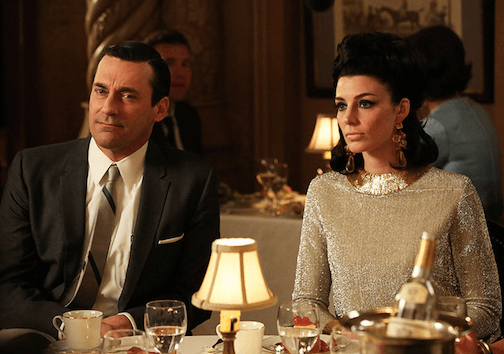
Stan, by contrast, has a more consistently developed aesthetic. He’s not constantly auditioning for new roles in life, he’s gradually and steadily figuring out what the product is. Stan’s original tight polos made him look more macho and aggressive than the other men, but also more vulnerable, less armored, not hiding in suits like Don or Roger, or swaddling himself in layers like Ginsberg. Stan’s machismo isn’t an embittered anti-feminism but a happy, hairy, embodied, earth-daddy kind of thing: Middle-aged Mr. Rizzo will definitely be joining a men’s drumming circle in the early ‘90s. Stan sports leather jackets and a giant belt buckle, but also fringed ascots and more jewelry than the other men in the office. In season 6, he is often shown wearing a beaded necklace next to Peggy in a menswear-inspired “tie.”
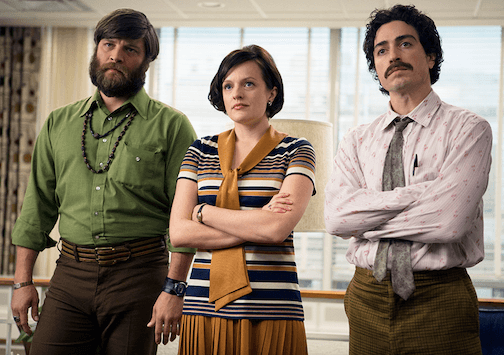
The pairing with Peggy is more than a gender-bending costume joke. Stan was originally tolerable only because we see him through Peggy’s eyes. In “Waldorf Stories” she has had enough of his insults, laziness, and porn-perusing and strips down to her underwear and then out of it, suggesting that they can be liberated about their bodies and also get some work done on the Vicks campaign, already. It’s one of the show’s all-time funniest scenes, but the circumstances are nerve-wracking. We’ve seen women coerced or raped in this show, by “respectable” men, under far less vulnerable conditions. Peggy, however, is nothing but entertained and slightly turned on—by her own power, clearly, not by Stan. Her epic refusal to view him as a sexual threat teaches the viewer how to see him.
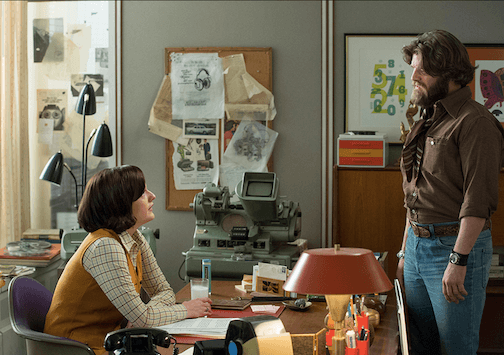
Megan is also often seen through the eyes of others: her mother, who sees her as a foolish dilettante; her father, who sees her as a committed artist; Don, who sees her as a new beginning; her agent, who sees her as a problem; Harry, who sees her as an opportunity. We see Stan as Peggy does, but it’s clear that Peggy sees the truest version of Stan (in “Waldorf Stories,” she could literally see parts of Stan that the viewer couldn’t, and commented on them, too). Megan is seen and talked about constantly by people who only view her through the lens of their own desire.
And Megan’s own desires are entirely shaped by her reactions to others. She almost never says she wants something for its own sake. She expresses interest in copywriting to emulate Peggy and please Don. She takes up acting again to compete with her friends and live up to her father’s high opinion. When she gets pregnant with Don, she doesn’t want the child, but expresses qualms about abortion “because of how I was raised,” not because of any individual moral convictions.
Megan’s lack of an inner self has sometimes led fans and critics to assume that her character is a mere plot convenience. I don’t think that’s the case. Megan is the youngest child of an extremely unhappy and dysfunctional academic family. Both her parents are alcoholics and adulterers. Her mother is a staunch but thoroughly hypocritical Catholic and her father is a communist. Megan has seen what passion and conviction can do to people. No wonder she wants none of it. Adapting to whatever the person in the room wants you to be is a survival mechanism, and one that Megan, like many children of alcoholics, had little choice but to learn.
The looser social rules become, the harder life gets for people like Megan who don’t have an inner core to rely on. That’s the fine print at the bottom of any liberation movement. Stan, who had a strong personality to begin with, almost literally blooms (that beard!) under the increasing political and personal freedom of the era. Megan, by contrast, was at her best in “Codfish Ball,” juggling the sometimes-contradictory roles of roles of tactful daughter, up-and-coming copywriter, devoted wife, and hip stepmother simultaneously and brilliantly. She can’t function without a script.
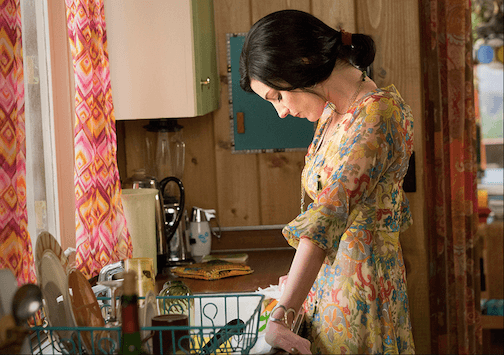
These last episodes of Mad Men draw a thick, bright line between the wealthy and the merely well-paid. With a cool million in alimony sitting in her bank account, Megan is now among the former. She can’t buy herself a role in a Hollywood film, but if she were truly as committed to art as her father thinks, she could start a theater company with that money. But we know she won’t. If anything, that glittering pile of cash won’t protect her, but will make her a tempting target to the quacks and con men and cult leaders preying on the psychically vulnerable in 1970s California.
The political and social liberation of women gave Megan the right to live on her own, leave Don, choose a career and pursue it, live her life as she wants. The enormous personal privilege of wealth gives her the power to act on that freedom in any way her heart desires. But Megan Calvet Draper has no idea what her heart desires. She’s rich and beautiful and utterly useless. And she doesn’t even know she’s living in Stan Rizzo’s stolen California dream.
Before you go, we hope you’ll consider supporting DAME’s journalism.
Today, just tiny number of corporations and billionaire owners are in control the news we watch and read. That influence shapes our culture and our understanding of the world. But at DAME, we serve as a counterbalance by doing things differently. We’re reader funded, which means our only agenda is to serve our readers. No both sides, no false equivalencies, no billionaire interests. Just our mission to publish the information and reporting that help you navigate the most complex issues we face.
But to keep publishing, stay independent and paywall free for all, we urgently need more support. During our Spring Membership drive, we hope you’ll join the community helping to build a more equitable media landscape with a monthly membership of just $5.00 per month or one-time gift in any amount.




















































































